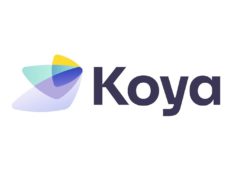
Koya Medical recently presented data from the company’s prospective, multicentre, randomised, crossover study comparing Dayspring, the company’s active compression treatment for lymphoedema, to a traditional pneumatic compression pump.
In the trial, study participants reported significantly greater adherence to Dayspring treatment in comparison to the use of a pneumatic compression pump. Additionally, subjects in the Dayspring arm demonstrated a greater reduction in limb volume, improvement in quality of life, and patient preference. According to a press release, Dayspring is the first active compression treatment that enables movement and mobility cleared by the US Food and Drug Administration (FDA) to treat lymphoedema and other similar conditions.
The data were presented at the American Vein and Lymphatic Society (AVLS) 35th Annual Congress 2021 (7–10 October, Denver, USA) by Stanley G Rockson, professor of Cardiovascular Medicine, chief of Consultative Cardiology, and the director of the Center for Lymphatic and Venous Disorders at Stanford University (Stanford, USA). Rockson also serves as chief medical officer of Koya Medical.
“For people with lymphoedema, movement is important from both a clinical perspective and a quality-of-life perspective. These data illustrate the Dayspring treatment’s ability to provide that essential movement while still delivering the clinical outcomes we need from compression therapy,” said Rockson. “Traditional pneumatic compression pumps have long represented an important and effective tool for lymphoedema patients to self-manage a lifelong chronic condition. It is rewarding to see this much-needed innovation coming to market; it provides patients with an additional option, especially this one that enables movement and improves adherence.”
The head-to-head trial has enrolled 52 participants thus far who were treated in the home sequentially, in random order, with either a Dayspring device or a leading pneumatic compression pump. Study participants were instructed to use the assigned randomised device at home for four weeks, one hour every day, and after a four-week “wash-out” period were instructed to use the comparator device at home for four weeks, one hour every day. The interim data presented at AVLS represents 37 participants who have completed both arms of the study. Limb volume, quality-of-life outcomes, adherence, and patient preference were evaluated. Quality-of-life outcomes were assessed using the Lymphedema Quality-of-Life Questionnaire (LYMQOL), a validated disease-specific instrument to measure the impact of lymphoedema on patients’ lives.
The primary endpoint of the study is non-inferiority for limb volume reduction against the comparator pneumatic compression pump. The interim analysis supported a greater, statistically significant improvement in limb volume reduction (p<0.05). The study thus far has demonstrated statistically significant higher scores in the quality-of-life measure (p<0.05) for Dayspring when compared to the pneumatic compression pump. Also, the data showed stronger treatment adherence for Dayspring, with 95% of the study participants adhering to the prescribed treatment course, compared to only 48% of participants in the comparator group (p<0.01). Lastly, the majority of subjects (89%) preferred Dayspring over the pneumatic compression pump (p<0.01), reportedly due to movement, mobility, and improved function in their daily lives.











